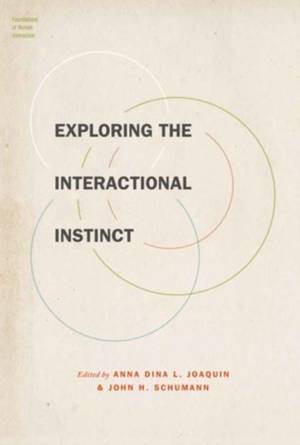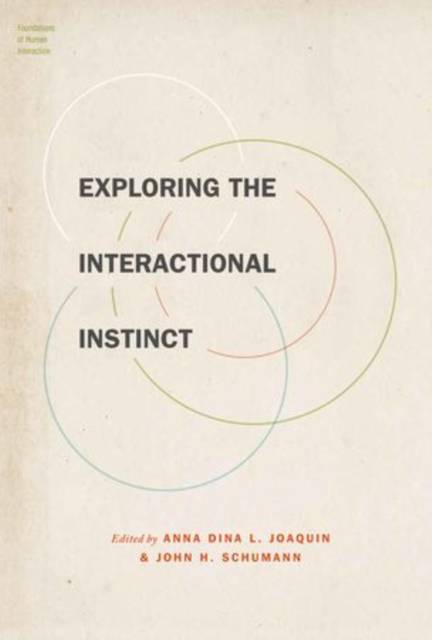
Door een staking bij bpost kan je online bestelling op dit moment iets langer onderweg zijn dan voorzien. Dringend iets nodig? Onze winkels ontvangen jou met open armen!
- Afhalen na 1 uur in een winkel met voorraad
- Gratis thuislevering in België vanaf € 30
- Ruim aanbod met 7 miljoen producten
Door een staking bij bpost kan je online bestelling op dit moment iets langer onderweg zijn dan voorzien. Dringend iets nodig? Onze winkels ontvangen jou met open armen!
- Afhalen na 1 uur in een winkel met voorraad
- Gratis thuislevering in België vanaf € 30
- Ruim aanbod met 7 miljoen producten
Zoeken
Exploring the Interactional Instinct
€ 140,95
+ 281 punten
Omschrijving
The Interactional Instinct (Oxford University Press, 2009) argued that the ubiquitous acquisition of language by all normal children was the result of a biologically-based drive for infants and children to attach, bond, and affiliate with conspecifics in an attempt to become like them. This instinct leads children to seek out verbal interaction with caregivers and allows them to become competent language speakers by about age 8. In Exploring the Interactional Instinct, scholars in applied linguistics expand the theory by examining interaction in second language acquisition; in different cultures and species; in observation without participation; in literacy; in schizophrenia; in relation to human physiological responses; and in relation to correlated perspectives on interaction. This book, like its predecessor, offers a radical view of language acquisition: language is not acquired as a result of a Language Acquisition Device in the brain, but is rather a cultural artifact universally acquired by all normal children.
Specificaties
Betrokkenen
- Uitgeverij:
Inhoud
- Aantal bladzijden:
- 304
- Taal:
- Engels
- Reeks:
Eigenschappen
- Productcode (EAN):
- 9780199927005
- Verschijningsdatum:
- 5/12/2013
- Uitvoering:
- Hardcover
- Formaat:
- Ongenaaid / garenloos gebonden
- Afmetingen:
- 157 mm x 236 mm
- Gewicht:
- 521 g

Alleen bij Standaard Boekhandel
+ 281 punten op je klantenkaart van Standaard Boekhandel
Beoordelingen
We publiceren alleen reviews die voldoen aan de voorwaarden voor reviews. Bekijk onze voorwaarden voor reviews.










